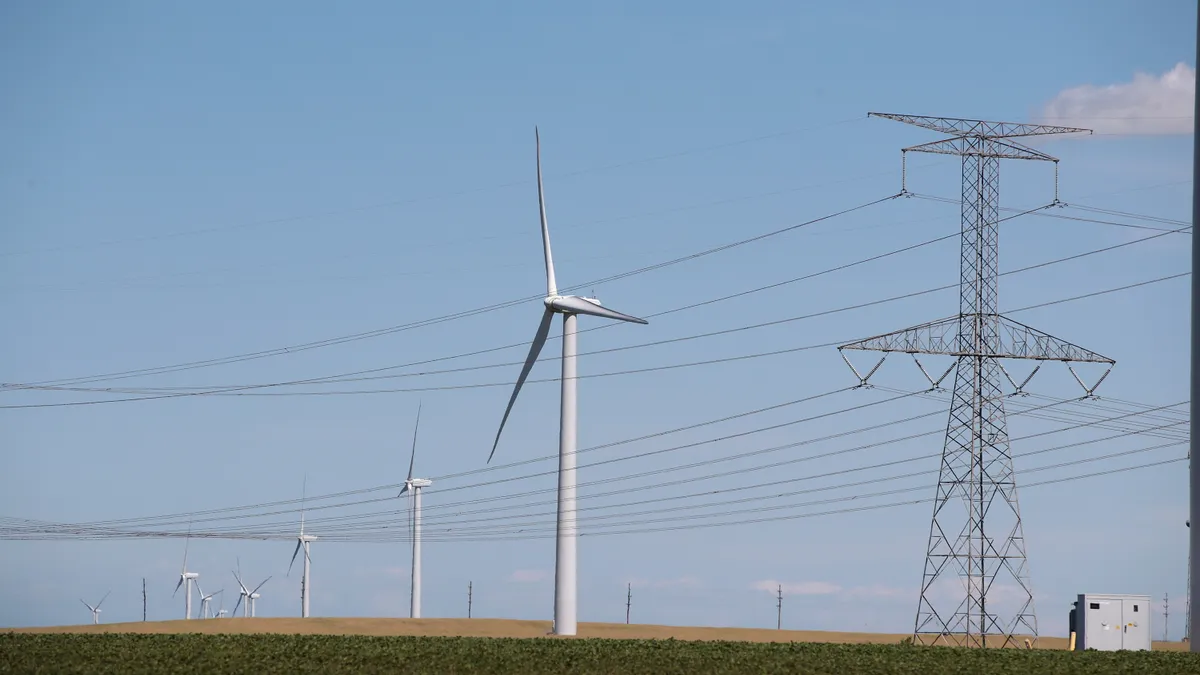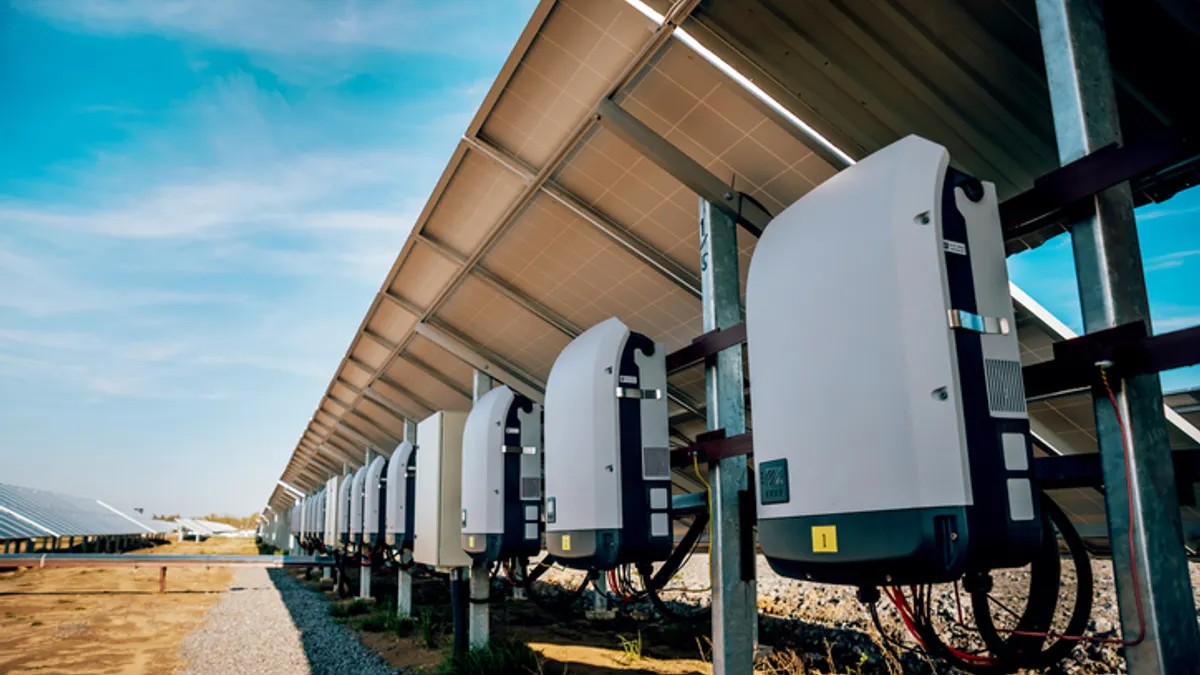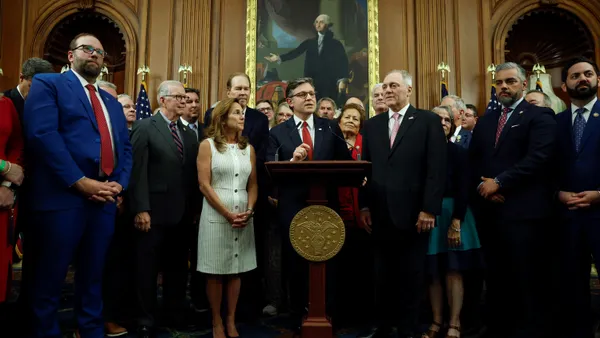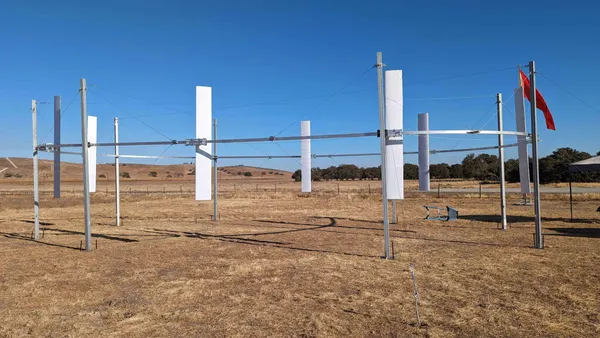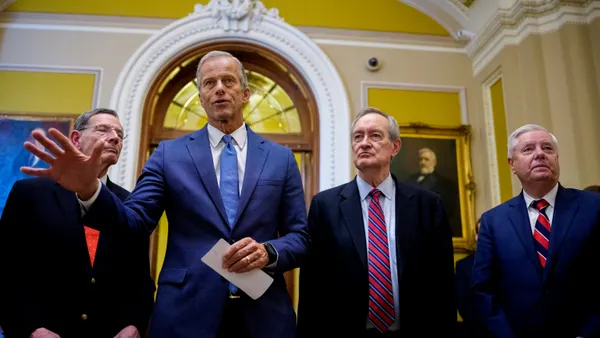Dive Brief:
-
A shortage of new renewable projects available to interested buyers has caused prices for power purchase agreements to rise 9.7% since the beginning of 2022, and 28.5% since the beginning of 2021, according to an analysis by PPA marketplace LevelTen Energy.
-
Rising materials costs, interconnection backlogs, and regulatory risks have all contributed to an upward price trend, according to Rob Collier, vice president of energy marketplace at LevelTen Energy.
-
In some cases, developers have chosen to pause offering PPAs in response to high price and regulatory uncertainty, Collier said. However, he said demand for renewable energy remains strong in spite of the industry headwinds.
Dive Insight:
More stable supply chains and stronger policy could still return renewable energy to a “world of declining costs,” Collier said, but for the time being, rising prices are likely here to stay.
LevelTen’s market-averaged national PPA price index rose to $39.91/MWh for all sources of renewable energy in the first quarter of 2022. The index increased $3.61 during the first quarter of this year alone — with at least some of that increase representing the impacts of the outbreak of war in Ukraine.
Overall energy prices have increased dramatically since the outbreak of the conflict. And while wind and solar may not require oil or gas as a source of fuel, energy markets are still interrelated, Collier said. Shipping and materials prices are up, and the increased cost of energy on wholesale markets has some developers rethinking PPAs as a financial strategy.
“A renewable energy developer trying to sell energy and certificates from the project has two options: secure revenues in a PPA, or go out and play in the wholesale market,” Collier said. Even those developers who don’t want to take their chances on the market can still charge more for a PPA because the benefit of the agreement is lower energy prices relative to the market as a whole. If wholesale prices go up, the developer can charge more for the PPA without eroding the desirability of their agreement.
On top of this latest dynamic, developers must still contend with supply chain issues and materials shortages that began during the Covid-19 pandemic, Collier said. A survey by LevelTen determined that while about 40% of developers aid they were able to find new, more reliable suppliers, 28% were unable to make desired changes to their supply chains.
The decision by the U.S. Department of Commerce to investigate solar panel imports from four southeast Asian countries has also contributed significantly to increased prices, Collier said. Some developers have also seen interconnection costs double over the course of a single project, he added.
Uncertainty about what it will cost to build a renewable energy project — and therefore what PPA price will be required to cover costs — has led some developers to opt to sit out the market entirely for the time being, he said.
“Rather than committing to something they’re not sure they can stand behind, they’re taking a pause,” Collier said. “That’s what we are seeing.”
Current data collected by LevelTen suggests that in the absence of supportive policies such as those proposed by the Build Back Better plan, PPA prices will continue to rise for the next several years. However, Collier said this does not appear to be impacting the demand for renewable energy. With power prices increasing overall, corporate buyers remain committed to environmental goals and continue to seek the relative savings associated with PPAs, Collier said. This desire to see deals move forward, he said, has led to an increase in purchase contracts with more flexible terms to encourage developers to continue projects.


